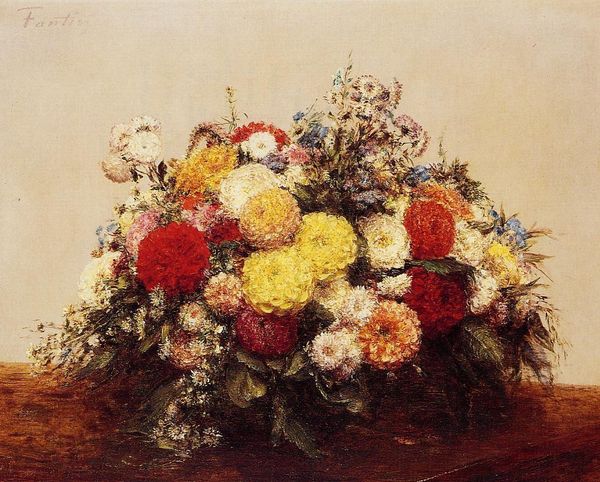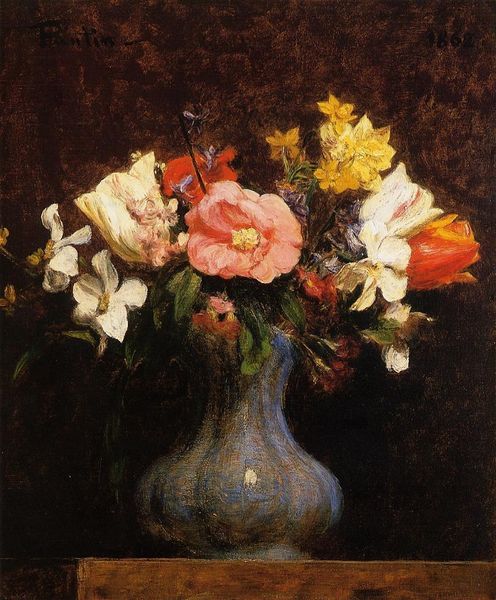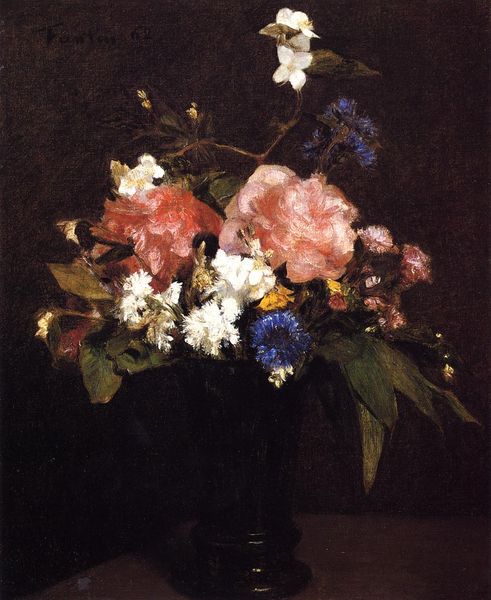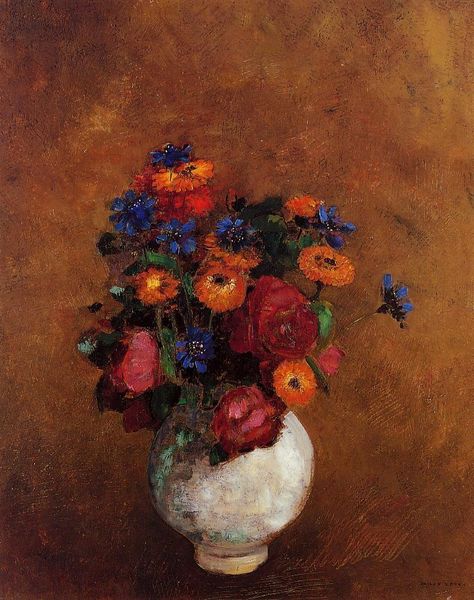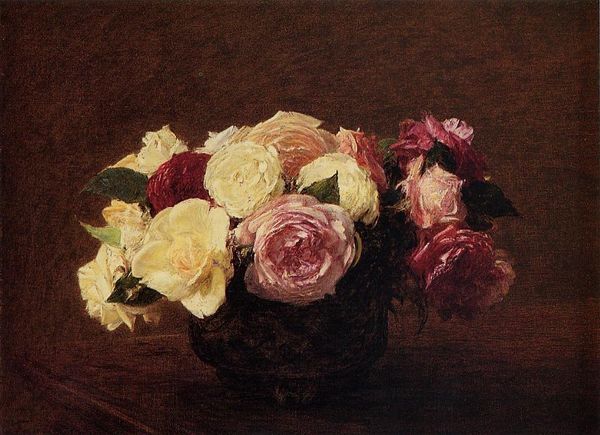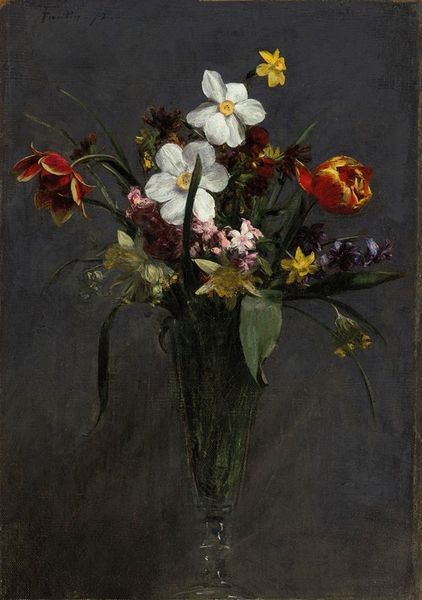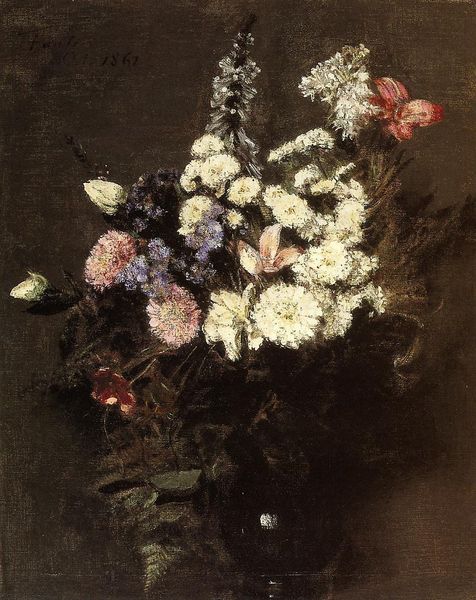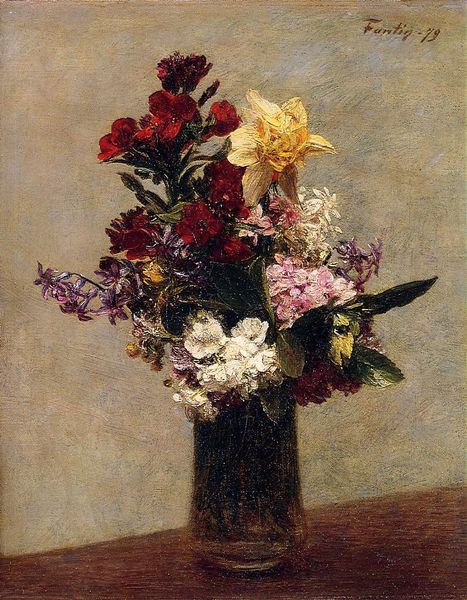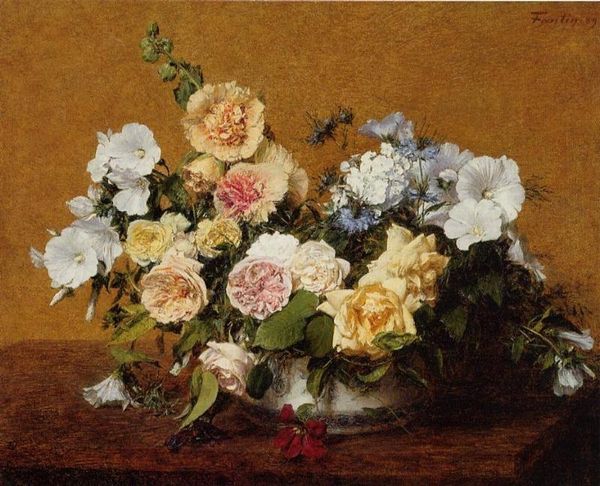
Copyright: Public domain
Editor: Here we have Fantin-Latour’s “Still Life with Flowers,” created in 1862. It’s an oil painting that feels quite lush and romantic. I am immediately drawn to the contrasting light and dark areas and the variety of textures. What do you see in this piece? Curator: What strikes me is how Fantin-Latour uses the language of flowers themselves. These blooms are signifiers, steeped in cultural memory. Roses, for example, especially the pink ones, traditionally represent love and grace, while the other varieties add complexity. Do you notice the almost hidden presence of darker blooms in the shadow? Editor: I do. They’re subtle, almost fading into the background. What’s the significance? Curator: They contribute to a sense of transience, of *vanitas*. Flowers, symbols of beauty, inevitably decay. Consider this work in the context of Romanticism; nature is not just beautiful, but powerful and uncontrollable, holding both life and death. How do you think this contributes to the overall feeling? Editor: That makes sense. There's a bittersweet feeling here – a celebration of beauty tinged with melancholy. It’s a very personal and emotional still life. Curator: Precisely. He is also memorializing specific types of flowers that held specific meanings, and documenting a cultivated understanding of these floral signifiers. Editor: It's fascinating to think about how even seemingly simple images carry layers of symbolic meaning we might easily miss. Curator: Exactly. By understanding the visual language of flowers, we can tap into a richer understanding of the artist's intention and the cultural values of the time.
Comments
No comments
Be the first to comment and join the conversation on the ultimate creative platform.




